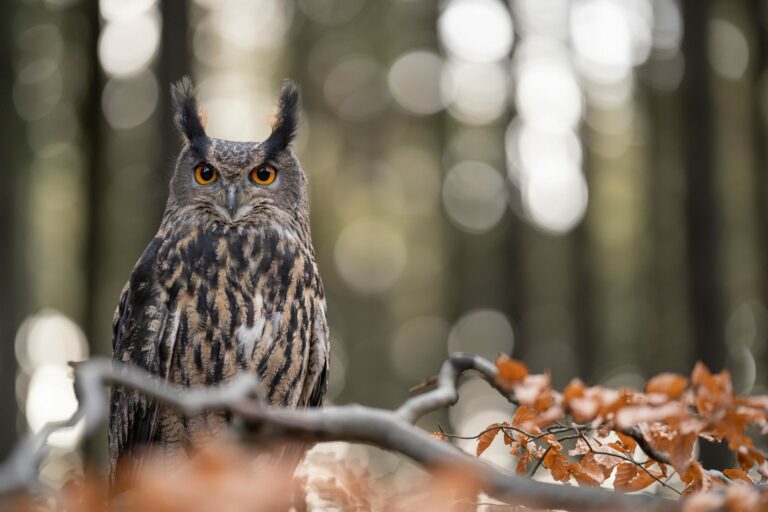Bubo bubo

The plumage of the Eurasian eagle-owl is brown with a light throat patch and is lighter on the underside, dotted with darker feathers. Bubo bubo has large feather tufts and can reach a length of up to 70 cm (Schaefer 2018). As the largest owl species, it is widely distributed and occurs in North Africa, Asia, and Europe. The Eurasian eagle-owl uses both forests and rocks and mountains as habitats, often in proximity to water bodies such as ponds, lakes, or rivers. It breeds from March in rock or tree cavities, on the ground or uses old nests of other large birds of prey (Piechocki 1953). Juveniles can be endangered by predators such as foxes, martens, or raccoons. Other threats to the Eurasian eagle-owl include collisions with, for example, medium-voltage power lines (Breuer and Brücher 2010), disturbances at breeding sites, or loss of habitats.
Diet: The Eurasian eagle-owl feeds on smaller mammals such as hedgehogs, mice, and rabbits, as well as other bird species that are hunted at night. Indigestible components of the diet are regurgitated as pellets.
Conservation status: According to the IUCN Red List of Threatened Species, the Eurasian eagle-owl is classified as “Least Concern.”
-
Breuer, W & Brücher, S (2010)Gefährliche Mittelspannungsmasten und Klettersport: Aktuelle Aspekte des Uhuschutzes Bubo bubo in der Eifel. In: Charadrius 46 (1-2), S. 49–55.
-
Piechocki, R (1953)Der Uhu. 5. Aufl.: A. Ziemsen Verlag.
-
Schaefer, M (2018)Brohmer – Fauna von Deutschland. Ein Bestimmungsbuch unserer heimischen Tierwelt: Quelle & Meyer Verlag GmbH & Co.